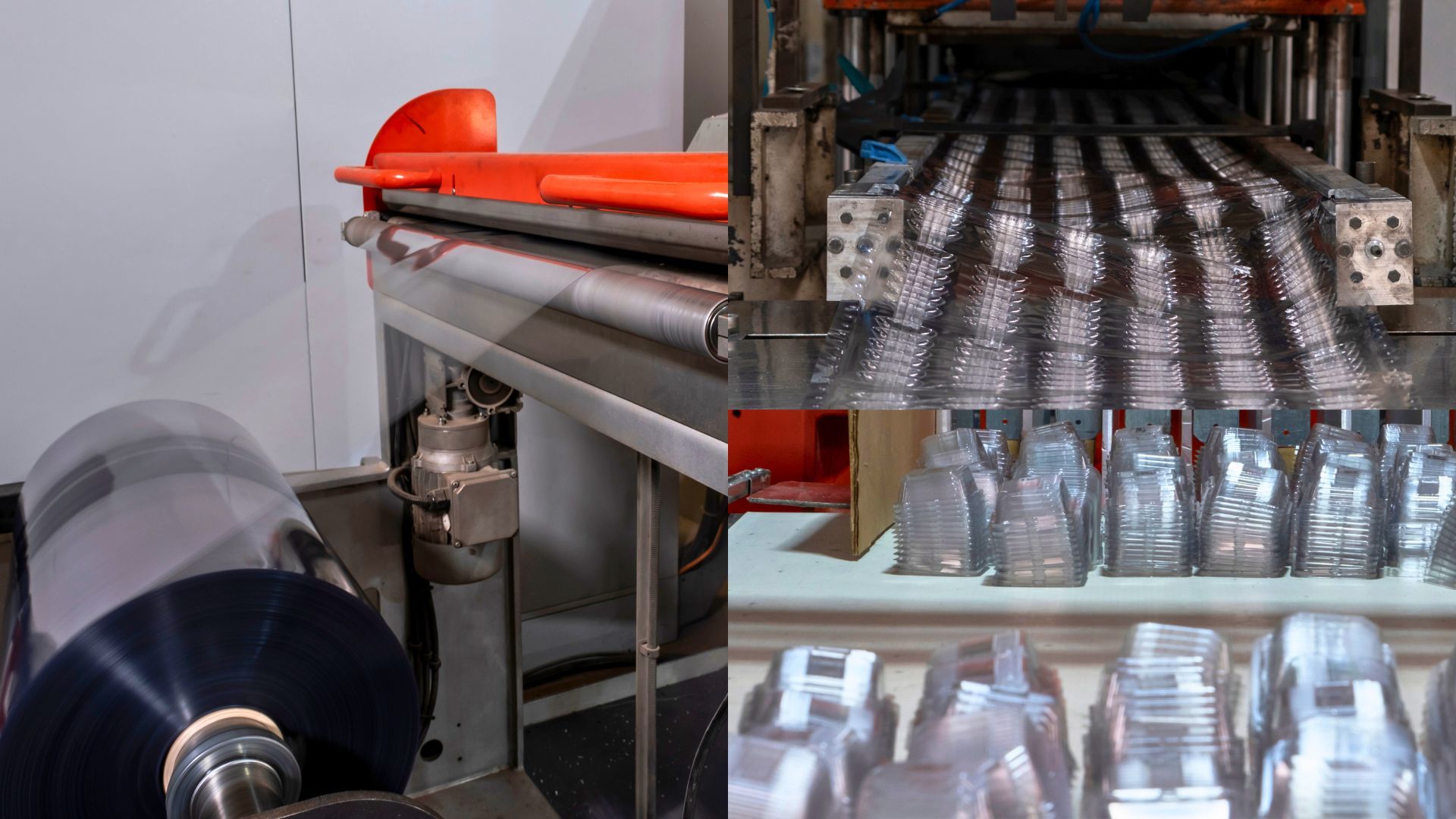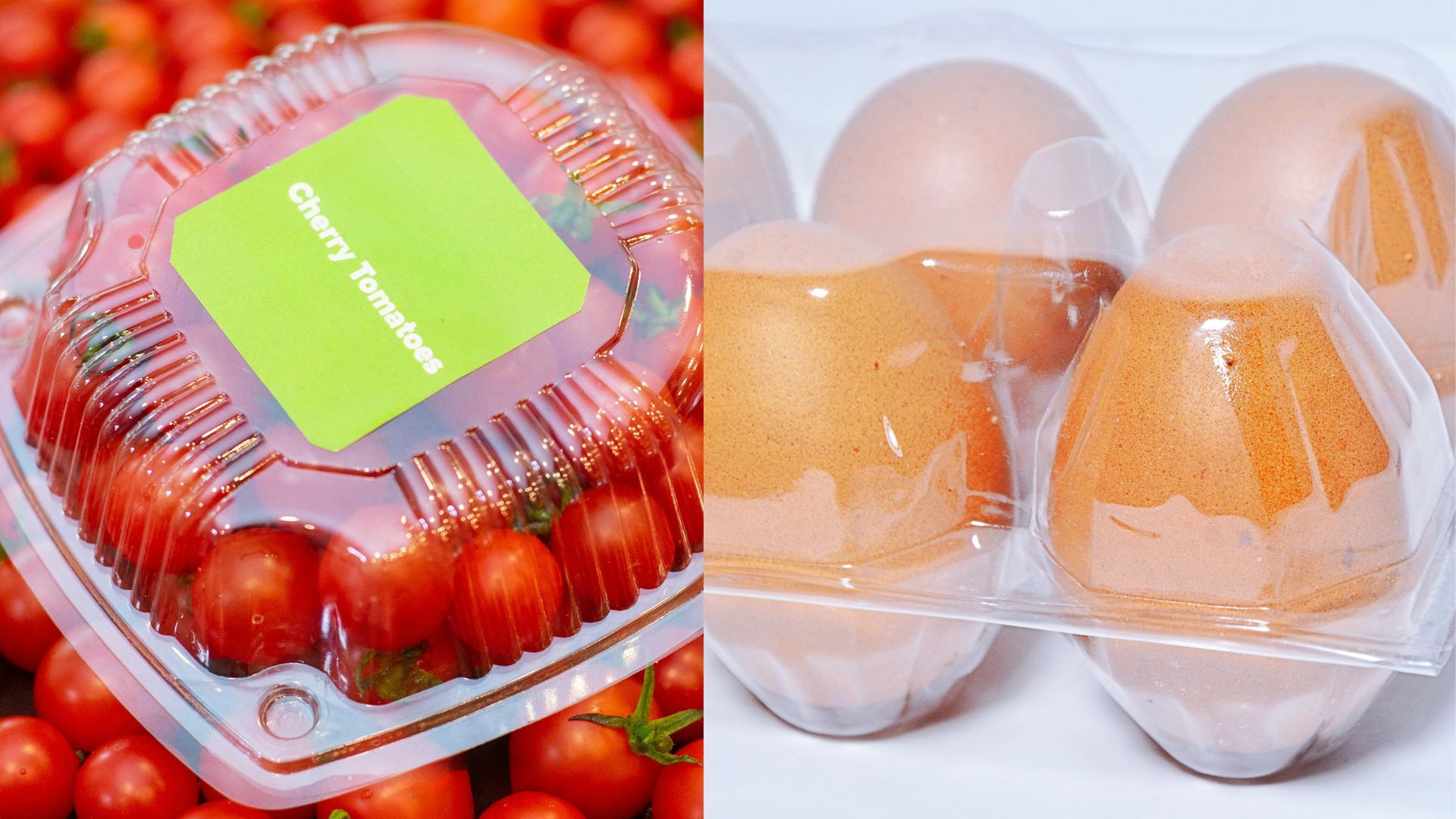
Thermoformed PET Packaging on the Rise: What Makes PET the Preferred Choice
Market Overview
According to the report Thermoform Packaging Market Forecast 2024–2032 by Global Market Insights, the global thermoform packaging market reached a size of USD 50.3 billion in 2023 and is projected to grow at a compound annual growth rate (CAGR) of 5.7% through 2032, reaching USD 82.9 billion. As a key material in thermoforming, PET stands out due to its excellent performance and environmental benefits, making it a focal point in the industry.
Thermoforming—a process that involves heating a plastic sheet to a pliable forming temperature, shaping it into a mold, and trimming it—has become a preferred packaging solution across industries. Its popularity stems from its ability to deliver lightweight, cost-effective, and highly customizable designs.
The food and beverage industry drives a large share of this growth, fueled by demand for ready-to-eat meals, on-the-go snacks, and sustainable packaging options. The healthcare and pharmaceutical sectors also increasingly rely on thermoformed packaging to ensure product integrity, tamper resistance, and extended shelf life.
However, the industry faces challenges, including volatile raw material prices and high initial investment costs for thermoforming equipment. Despite these hurdles, technological innovation and sustainable material adoption continue to create significant opportunities for market expansion.
Why PET Excels in Thermoforming Applications
Within the competitive landscape of thermoforming materials—including polyethylene (PE), polyvinyl chloride (PVC), polystyrene (PS), paperboard, and aluminum—polyethylene terephthalate (PET) consistently outperforms due to its superior physicochemical properties and sustainability credentials:
Exceptional Optical Clarity: PET's intrinsic high transparency delivers crystal-clear product visibility, enhancing consumer confidence and driving purchase intent in retail environments.
Outstanding Mechanical Strength-to-Weight Ratio: PET containers combine lightweight design with remarkable rigidity and impact resistance, enabling material savings and significantly lowering transportation energy and carbon footprint.
Robust Barrier Performance: PET exhibits excellent resistance to moisture, oxygen, and other gases, which extends product shelf life and preserves quality, critical for food, beverage, and pharmaceutical packaging.
Advanced Recyclability and Food-Grade Compliance: PET’s thermoplastic nature allows for efficient closed-loop recycling systems that preserve polymer integrity and meet rigorous regulatory standards for recycled food-contact materials, supporting circular economy initiatives.
Collectively, these advantages position PET as the premium choice for thermoformed packaging, aligning with industry demands for sustainable, high-performance, and consumer-friendly solutions.
From PET Resin to Thermoformed Packaging: Material Requirements
High-quality polyethylene terephthalate (PET) resin is the foundation for manufacturing reliable thermoformed packaging. The choice of resin critically influences processing efficiency, product quality, and recyclability.
For producing amorphous PET (APET) sheets—the primary substrate for thermoforming—resins with moderate intrinsic viscosity (IV), typically between 0.70 and 0.85, are preferred. These grades offer excellent melt strength and optical clarity, enabling consistent sheet extrusion with uniform thickness and superior transparency.
Sheets made from these resins provide high transparency, sufficient stiffness, and mechanical strength, ensuring precise moldability and dimensional stability during thermoforming and subsequent use. APET sheets are thermoformed into diverse packaging formats such as trays, clamshells, cups, and lids. PET’s inherent barrier properties help extend product shelf life, while its recyclability supports sustainability and compliance with stringent food-contact regulations.
Key PET Resin Products: WK-821 and WK-901
WK-821 and WK-901 are two high-performance PET resins specially formulated to meet the demanding requirements of amorphous PET (APET) sheet production used in thermoforming applications. These resins play a critical role in ensuring the quality, processability, and safety of APET sheets, which are widely employed across various packaging sectors.
WK-821 for APET Sheets
WK-821 features a moderate intrinsic viscosity (IV) typically around 0.83, which balances melt strength and flow properties, essential for producing uniform, defect-free APET sheets. It complies with major food contact regulations including China GB 9685/4806.6, EU No 10/2011, and US FDA 21 CFR 177.1630, making it suitable for food-grade packaging. Key attributes include low acetaldehyde content, stable molecular weight distribution, and excellent thermal and optical properties, which contribute to efficient thermoforming with minimal defects and consistent sheet quality.
WK-901 for Premium APET Sheets
Designed for high-grade APET sheet applications, WK-901 offers a slightly higher intrinsic viscosity, around 0.87, providing enhanced melt strength and slower crystallization rates. This resin supports the production of thicker or larger sheets used in more demanding thermoforming processes, such as rigid trays and clamshell packaging. It offers superior dimensional stability during forming and excellent barrier properties post-thermoforming. Like WK-821, WK-901 meets stringent food safety standards and delivers high transparency and strength in the final thermoformed packaging.
Choosing the appropriate PET resin is fundamental for optimizing the thermoforming process and ensuring the performance of APET sheet packaging. Resins like WK-821 and WK-901 allow manufacturers to produce thermoformed products with excellent clarity, mechanical strength, and barrier functions while adhering to food safety compliance. Their balanced melt viscosity and crystallization behavior enhance sheet extrusion and forming efficiency, supporting high production yields and sustainable packaging solutions.
Detailed Applications of PET Thermoforming Packaging
PET thermoformed packaging has found broad application across various industries due to its favorable physical properties and environmental benefits. In the food and beverage sector, PET is commonly used for products such as salad bowls, deli trays, bakery clamshells, yogurt cups, beverage lids, and ready-meal containers. Its excellent clarity and barrier performance help extend shelf life while enhancing consumer trust through product visibility.
In retail and consumer goods, PET thermoforming is utilized for blister packs and clamshell packaging designed for electronics, cosmetics, and personal care items, providing both protection and aesthetic appeal. The healthcare and pharmaceutical industries rely on PET for sterile medical trays, device packaging, and pharmaceutical blister packs, where strict hygiene and safety standards must be met.
Industrial applications include component trays and packaging inserts for electronics and automotive sectors, ensuring product protection during storage and transport.
PET Cups: A Fast-Growing Segment in Thermoformed Packaging
Among thermoformed PET packaging products, PET cups have emerged as one of the fastest-growing categories, fueled by evolving consumer lifestyles and the rise of premium beverage offerings.
Market Dynamics and Growth Drivers
According to Grand View Research, the global PET cups market was valued at USD 2.1 billion in 2023 and is projected to expand at a CAGR of 6.2% from 2024 to 2030. Several factors are accelerating this growth:
- Expansion of coffee shop and specialty beverage chains: The global coffee chain market is forecast to exceed USD 237 billion by 2030 (Allied Market Research), driving demand for high-clarity, durable cups for iced coffee, smoothies, and specialty drinks.
- Rising consumption of ready-to-drink (RTD) beverages: Increasing urbanization and “on-the-go” lifestyles are boosting takeaway packaging demand.
- Regulatory pressure on non-recyclable plastics: Bans and restrictions on EPS and other single-use plastics in regions such as the EU, North America, and China have accelerated the shift toward recyclable PET solutions.
- Sustainability initiatives: Beverage brands are increasingly adopting rPET-based thermoformed cups to meet circular economy targets.
Major beverage and fast-food brands are increasingly adopting PET cups for their clarity, strength, and recyclability. Starbucks has introduced clear PET cups for iced beverages in North America and is transitioning to include recycled PET (rPET) content in its supply chain. McDonald’s and Coca-Cola are piloting 100% rPET cups in selected markets across Europe and Asia, reflecting a broader industry move toward circular packaging solutions. In China, Yum China's KFC and HeyTea (喜茶), a leading bubble tea brand, have adopted thermoformed PET cups to deliver premium aesthetics and functional performance while meeting their sustainability commitments.
With strong consumer demand for takeaway beverages and a growing emphasis on recyclability, PET cups are expected to gradually replace PP and PS alternatives. In the Asia-Pacific region, where bubble tea and specialty drinks are experiencing rapid growth, demand for PET cups is projected to outpace the global average, making it one of the most dynamic product segments driving the overall thermoformed PET packaging market.
Replacing Traditional Packaging with Thermoformed PET: A Sustainable Transition
Thermoformed PET is increasingly replacing conventional packaging materials across various sectors, driven by its multiple functional and environmental benefits. In applications such as fresh salads and beverages, PET trays and cups offer significant weight reduction and lower breakage risk compared to glass jars and bottles, while maintaining excellent product visibility. For meal kits and fresh food packaging, PET serves as a lighter, recyclable alternative to aluminum trays and cans, contributing to reduced transportation emissions and supporting circular economy initiatives.
Similarly, PET trays are progressively substituting foam and polystyrene containers commonly used for fresh meat and produce, owing to PET’s superior barrier properties and enhanced recyclability. In deli and bakery packaging, PET clamshells and trays provide improved moisture resistance and product protection, thereby extending shelf life and enhancing consumer appeal.
This transition towards thermoformed PET packaging reflects its unique balance of lightweight durability, optical clarity, and proven recyclability, enabling brands to align with evolving consumer expectations and increasingly stringent sustainability requirements.
Conclusion
The thermoformed PET packaging market is poised for sustained growth, driven by its versatility, performance, and alignment with sustainability imperatives. Selecting the appropriate PET resin grade is crucial to optimizing thermoforming efficiency and final product quality. As demand for eco-friendly and functional packaging solutions grows, PET thermoforming offers a proven pathway for manufacturers and brands to innovate responsibly and competitively.



